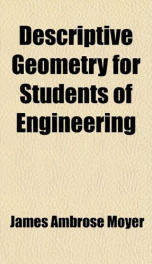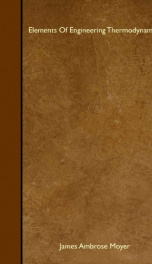descriptive geometry for students of engineering

Purchase of this book includes free trial access to www.million-books.com where you can read more than a million books for free. This is an OCR edition with typos. Excerpt from book: CHAPTER II PROBLEMS RELATING TO THE POINT, LINE, AND PLANE 11. The relation between the actual position of a line in space and its projections on a drawing, is easily conceived for a line that is parallel to a plane of projection. Difficulty is, however, usually experienced in conceiving this relation for a line that is oblique to all 'the planes of projection. A pictorial drawing of such a line is shown in Fig. 7a. The projections of the line are drawn by joining the projections of any two points in the line. For the line shown in the figure, the points most easily determined in the drawing are its intersections with the horizontal and front planes. These intersections are marked ah and W. The former, ah, has its horizontal projection coincident with the point itself, and its front projection is, of course, in the X axis at a/. Similarly the latter intersection, W, has its horizontal and front projections at bh (in the X axis) and at bf. The horizontal and front projections of the line are then drawn by joining ah with bh and af ith bt. 12. By reversing the process the intersections of the line with the planes of projection can be found when the projections of the line are given; thus in Fig. 76 the intersection of the line a b with the horizontal plane is the point, a, shown by its horizontal projection, ah, (behind the intersection of the front projection of the line with the X axis) and its front projection, a/, (in the X axis). The intersection of the same line with the front plane is the point, b, shown similarly by its projections bh and bf. When only two planes of projection are mentioned (as is the case for most problems), it is assumed the side plane is not needed. 13. Problem 1. To draw the projections of a line having given the intersections of the line wit...
Info about the book
Author:
Series:
Unknown
ISBN:
1558608656
Rating:
3.5/5 (4)Your rating:
0/5
Languge:
English
Users who have this book
Users who want this book
What readers are saying
What do you think? Write your own comment on this book!
write a commentif you like descriptive geometry for students of engineering try:
Do you want to exchange books? It’s EASY!
Get registered and find other users who want to give their favourite books to good hands!




